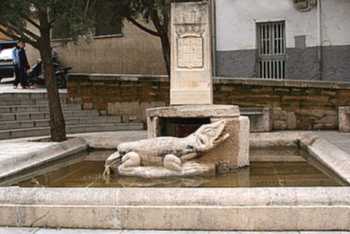El Lagarto de la Malena
A giant lizard makes up the most famous legend in Jaén
This gigantic reptile terrorised the population, eating up everyone who came to collect water from the spring and decimating the local flocks of sheep.

Photo - http://leyendasyfabulas.com
Jaén’s most famous legend tells the tale of a giant lizard, the Lagarto de la Magdalena, or as it is referred to locally, ‘el lagarto de la malena.’ The first historical reference to the story of the beast was in 1628 in a history of the nobility of the city of Jaén. It is said to have guarded the Raudal de la Magdalena, the spring which for many centuries provided much of the city’s water.
There are three versions to the tale of how the lizard was killed: the people of Jaén asked for help from a warrior, who approached the fearsome beast in a suit of armour made of mirrors, which reflected the sun and blinded his foe, allowing him to slay it with his sword.
Another tells the story of a condemned prisoner who asked for his freedom in return for ridding the city of the monster. The people were by now so desperate, that they decided to let him make the attempt. He asked for a horse, a lance and a bag of gunpowder, and went to the animal’s lair one night with a sack of hot bread and started laying out a trail. As the animal woke, it followed the trail, with the prisoner throwing down more bread as he made his escape on horseback. The lizard met its end when the horseman reached the Iglesia de San Ildefonso and threw down the bag of gunpowder instead of the bread. The lizard gobbled it up and exploded.
Yet a third version speaks of a shepherd who used a bloody lamb fleece as bait and filled it with burning tinder, killing the lagarto when it snapped down the tasty meal and, again, exploded.
It is said that a lizard skin which was on display on one of the church walls for many decades was believed to be the remains of the monster which had terrorised the city, but it is now thought to have been the skin of a caiman which was brought back on a voyage to the New World.
Whatever the truth behind the legend, the Lagarto de la Malena has become an important symbol of the city of Jaén. It can be seen at carnaval and other festivities, is represented in monuments, and has given its name to one of the most important rock festivals in Spain, the national music competition, Lagarto Rock. And Jaén City Hall is used a logo of the lagarto as part of its promotion for the city at the Fitur International Tourism Fair in Madrid.
It’s also given rise to a popular saying which can still be heard today in moments of anger, ‘así revientes como el lagarto de Malena,’ – may you explode like the lizard of Malena!
